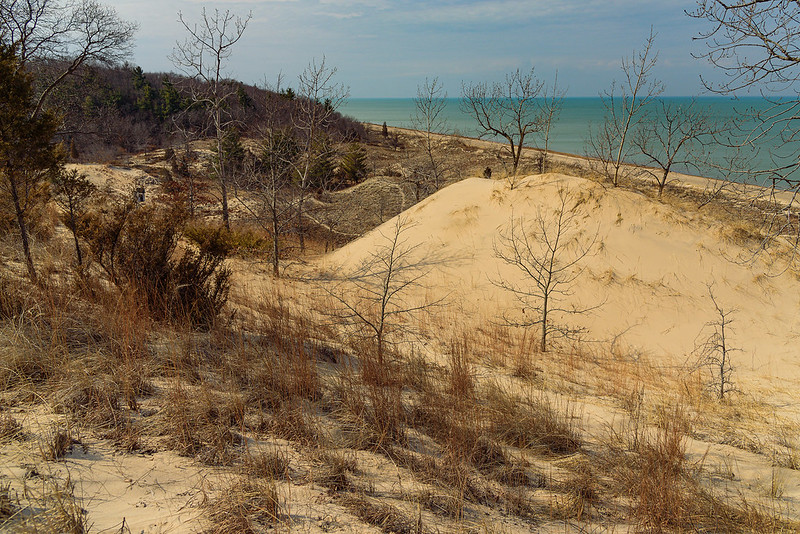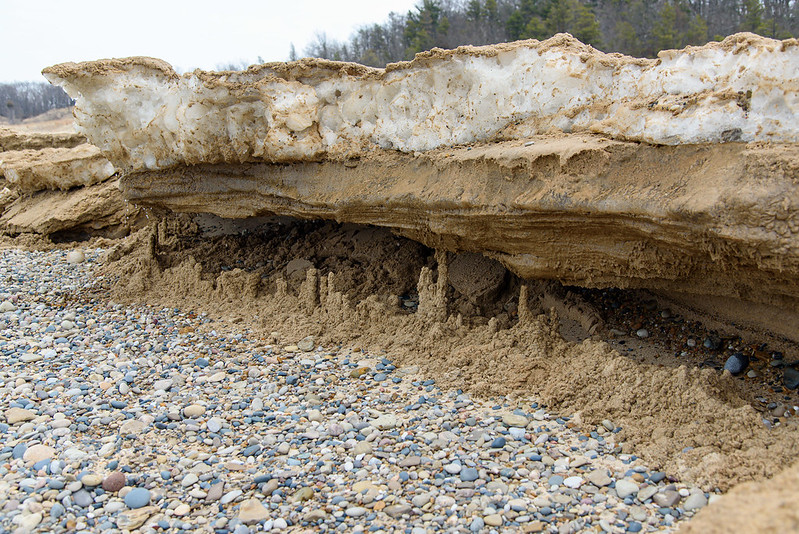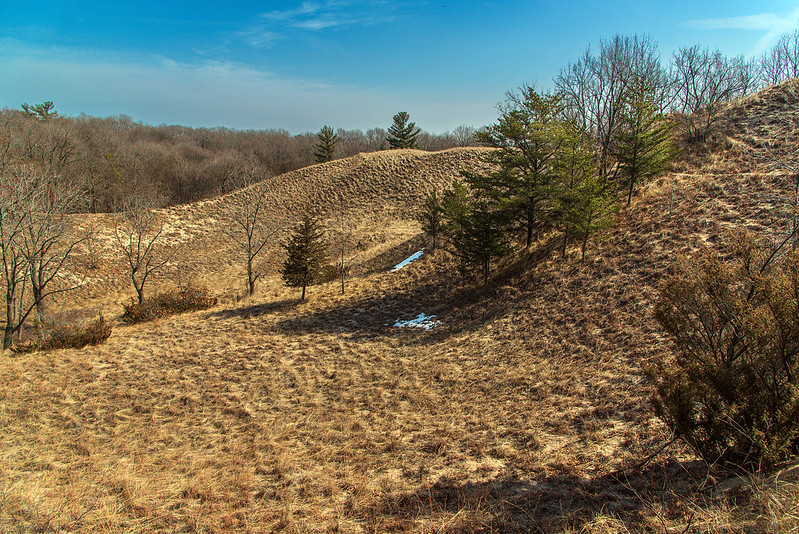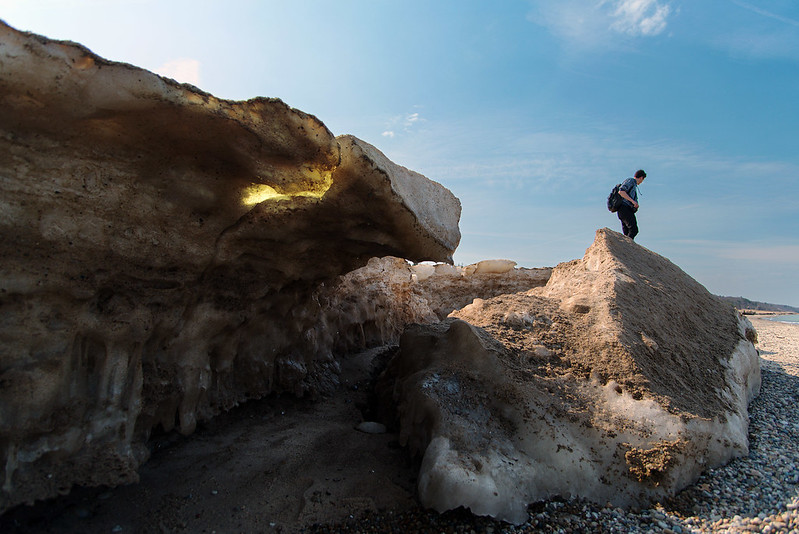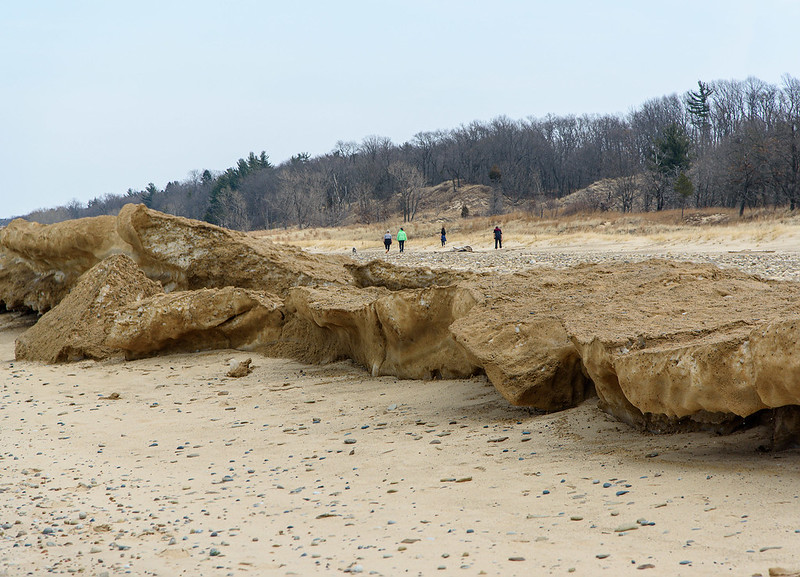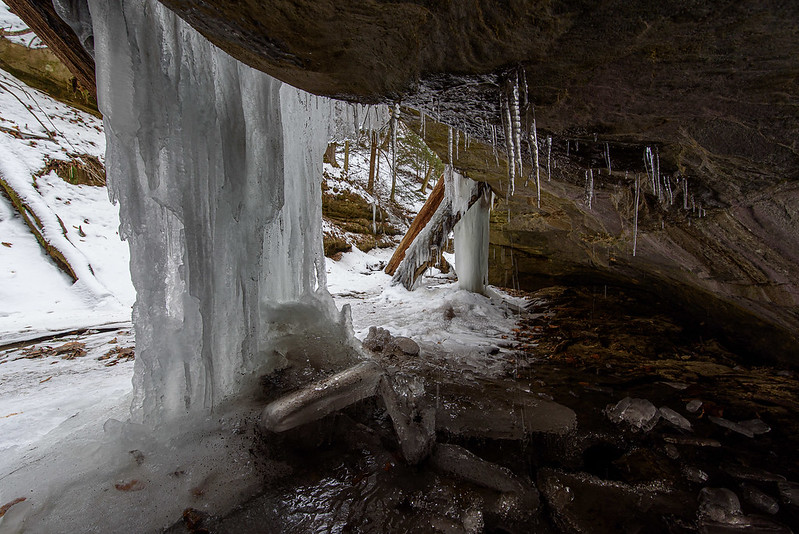
Walking through the rolling dune landscape in early Spring offers some views not normally seen when the trees green up with leaves. In this case, the lake is easily seen, and the matted, dry grasses allow you to see the trails through the dunes.
This particular trail is a bit strenuous, only because of the loose sand and the constant change in elevation, but because it's up, down, level, up, down, you get a bit of a recovery period every few minutes. If I were training for a run or on a cross country team, this is where I would train!
Some dune progression can be seen here, beach, grassy foredune, conifers, then oak. But because of the ever changing nature of the dunes, there are breaks in this progression, making it anything but linear. Here, grasses are behind conifer sometimes, it's just the way the dune formed and changes every so often.
Once around the tall dune, we are greeted with a view of the lake, and a relatively new living dune. It's called a living dune because the wind keeps pushing sand from the beach up and over it, preventing things from growing on it, and moving it inland at a slow pace. This dune has grown over the past few years, and while I can't tell by looking at it, it has moved inland a bit as well.
If you look very closely along the beach, you'll see some visitors walking along - tiny dots on the sand. This area is much larger than it looks in photographs, only noticed when you look for a source for scale, or you experience it yourself.
The wet and warmer weather are quickly greening things up, soon early wildflowers will dot the grasses.

